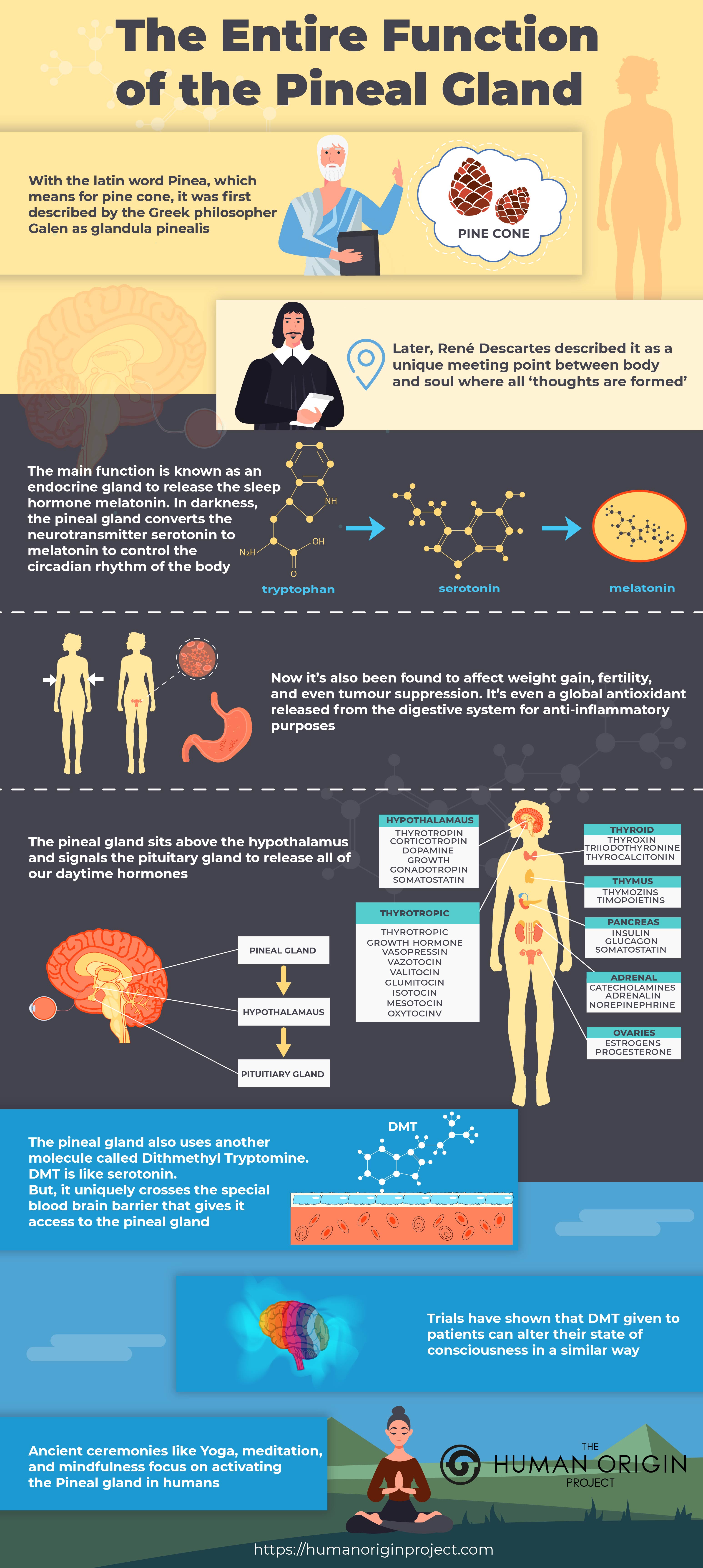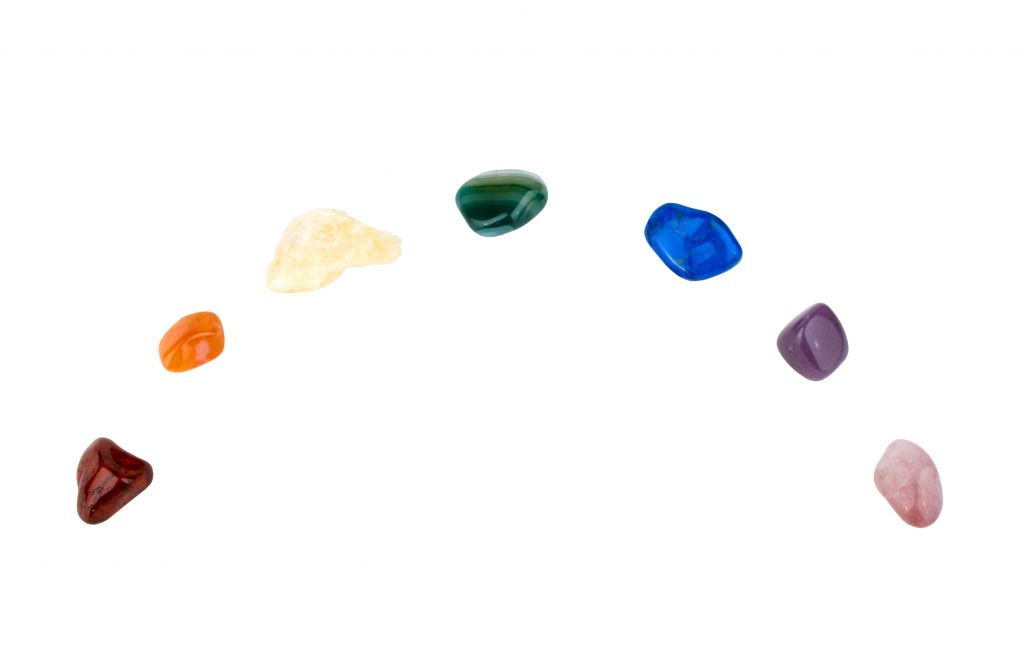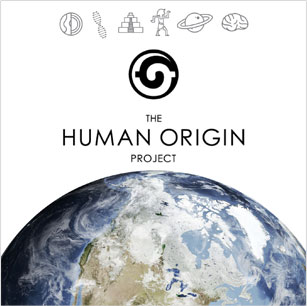The pineal gland is the master endocrine gland of the body. Its main function is to manage circadian rhythms and sleep-wake cycles.
However, it’s now known to have a cross function with neural and hormone balance.
With science and history, we’ll explore how to heal pineal gland calcification and open the third eye.
What does it mean when you open your third eye?
The pineal gland acts as the third eye in the human brain.
- It is connected to the eyes via the hypothalamus to detect light
- It contains visual cells similar to those in the eye
- Evolutionarily, it was a third physical eye in ancient creatures
- It releases melatonin in response to darkness
Opening the third eye in ancient medicine
Opening the third eye was an established practice in Ayurvedic medicine. Today we understand these practices were most likely aimed at healing the pineal gland calcification.
Shirodhara was therapy for illnesses related to the head, neck, nervous system, vision, and hearing.

Healers would open the third eye by a thin stream of warm remedial essential oil to the forehead. It would run along the vertex, down to the shoulders. The mind would enter ease, and complete relaxation would follow.
After 20 minutes a third-eye head massage would be performed.
How does the pineal gland get calcified?
Today CBCT scans reveal the pineal gland can become calcified. Pineal gland cysts or calcifications may be found in up to 60% of people. (1)
It was long thought pineal gland calcification was unrelated to other conditions. Today it’s known endocrine disorders and low melatonin may be linked to pineal gland calcification and cysts.
Low melatonin release and symptoms of pineal gland calcification:
- Aging (2)
- Headaches and migraine (3)
- Stroke (4)
- Fluoride exposure (5)
- Alzheimer’s disease (6)
- Schizophrenia (7)
- Breast cancer (8)
- Prostate cancer (9)
- Insulin resistance (10)
What are the signs of third eye opening?
Pineal gland and third eye opening may be different in all people.
Some signs of third eye opening include:
- A feeling of pressure between the eyebrows
- Increased foresight
- Increased light sensitivity
- Increased smell, taste and hearing
- The sense of gradual and continual change
- Seeing colors of blue or purple (indigo)
- A feeling of vibration and rhythm from your surroundings
Are there dangers of third eye opening?
As with any new experience, pineal gland decalcification may take a period of adjustment.
Symptoms or dangers of third eye opening include:
- Increased headaches delayed or ongoing
- White spots in the vision
- The feeling of panic or anxiety
It’s important to remember everyone experiences the third eye opening differently. If you are planning to decalcify the pineal gland, find a time where you are relaxed, feel centered, safe, and not affected by stress.
20 ways to open the third eye and decalcify the pineal gland
- Spend time in the sunlight every day: Morning light starts the circadian rhythm which regulates melatonin release in the pineal gland.
- Sleep in complete darkness: In the evening, darkness begins the four-hour melatonin release cycle. Artificial light can interfere with melatonin release, unsettling serotonin to melatonin production in the pineal gland.
- Reduce blue-light exposure: TV, mobile, and lighting with blue light can interfere with the normal release of melatonin from the pineal gland. Try wearing blue light blocking glasses (orange lens) in the evening.
- Perform daily mindful meditation: research shows meditation can enhance brain processes to heal the pineal gland. Meditation helps produce deep brain waves and stimulate the relaxing parasympathetic nervous system. Closing the eyes helps stimulate darkness, an essential process for the pineal gland.
- Perform Yoga: Yogic practices have long thought to decalcify the pineal gland and open the third eye. Inversion postures that turn upside down (head or handstands) may be helpful as they increase blood flow to the pineal gland.
- Practice deep diaphragmatic breathing: Deep nasal breathing, with longer exhalation, stimulates the parasympathetic nervous system. Try a 3-second inhalation and 5-second exhalation for 5-10 minutes.
- Stimulate the roof of the mouth: Use your tongue to place pressure on the top of the palate. The roof of the mouth has many relaxing, parasympathetic nerve endings. Try these postures when you are breathing or meditating. You can also use fingers to stimulate the gum behind the upper front teeth.
- Exercise daily: Performing daily exercise releases hormones that help circadian rhythm and release of melatonin at night.
- Practice gazing meditation: Trataka meditation is a practice to open the third eye. You can practice by candle gazing, or gazing at the flame of a candle without blinking for 1-3 minutes. After, close your eyes and focus on the afterimage for several minutes until it disappears. Repeat several times.
- Color visualization: Third eye chakra theory and yoga philosophy says the third eye relates to the color indigo. It is a deep blue-purple color. Try picturing a deep-blue purple color at the space between your brows. Focus on the image for 5 minutes.
- Sensory Deprivation: the pineal gland is sensitive to light. Immerse yourself in total darkness. Sensory deprivation tanks or ‘float tanks’ allow full immersion in the dark. Here you are immersed floating in water, entirely removed from all of your senses.
- Eat raw cacao: Chocolate in its pure form is a great source of magnesium. If you can’t get raw cacao, take 600-800mg of magnesium glycinate or magnesium citrate.
- Take a vitamin D3 supplement: Vitamin D3 helps regulate circadian rhythm. Take a dose of 5000-10000 IU of vitamin D3 daily depending on the season. Always take with vitamin K2.
- Take cod-liver oil: Naturally sourced cod-liver oil is a great source of the active form of vitamin A (retinol). Vitamin A is linked to melatonin via the detection of light in the eyes.
- Take a vitamin K2 supplement: Vitamin K2 (MK-4 & MK-7) helps to carry calcium out of soft tissues and may decalcify the pineal gland. It works alongside vitamin D3 and vitamin A (retinol). Take 600mcg per day.
- Take a vitamin B-12 supplement – B-12 helps the conversion of melatonin in the pineal gland. A sublingual vitamin B-12 supplement is best absorbed.
- Take neem extract: an ancient Indian practice, neem is antibacterial and supports a healthy immune response.
- Reduce stress: If your job or home life is stressful, it can cause chronic stress hormone release. These can interrupt your pineal gland, and long-term may lead to pineal gland calcification.
- Reduce refined sugar, flour, and vegetable oils: Packaged and processed foods usually contain these three ingredients. They disrupt the gut microbiome and cause inflammation.
- Heal leaky gut: Intestinal permeability increases inflammation in the body including the gut-brain axis. Undergoing a leaky gut or intestinal healing protocol will assist in decalcifying the pineal gland and opening the third eye.
Conclusion
Pineal gland calcification is linked to many sleep, hormone, and chronic diseases.
Today new research reveals the link between mindful meditation, circadian cycles, and supplementation may help to open damage to the third eye.
To read more:
Now it’s up to you. How did you open your third eye? What did your experience teach you? We’d love to hear your story in the comment section below.

























